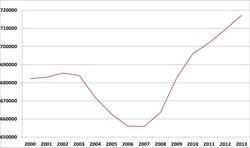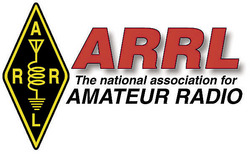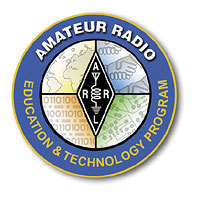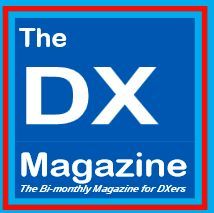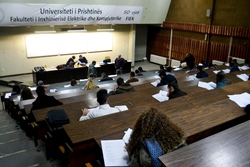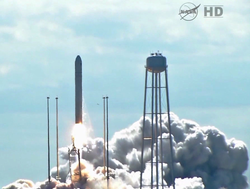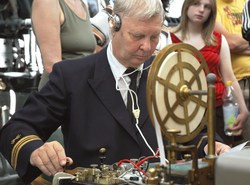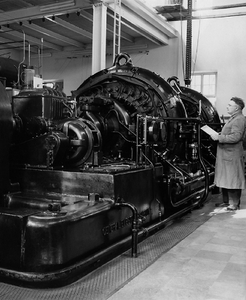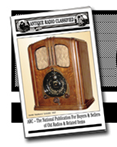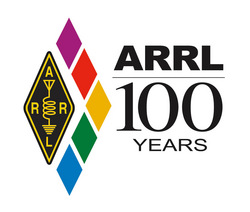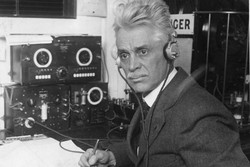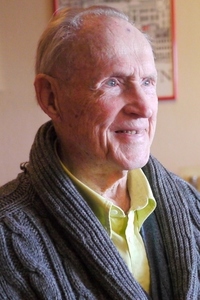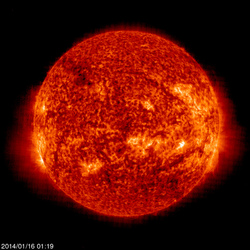 January 16, 2014 John E. Ross, KD8IDJ, Editor
| ||||||||||||||||||||||||||||||||||||||||||||||||||||
Ham Radio Statistics: Amateur Radio Showing Steady Growth in the US
The Amateur Radio population in the US continues to show steady growth, according to statistics compiled by Joe Speroni, AH0A. As of the end of 2013, the FCC database showed 717,201 licenses in its Universal Licensing System (ULS). That's the greatest number of US hams ever, and it's up from 709,575 in December 2012. The volume of Amateur Radio applications slowed somewhat to 141,943 from its zenith of 176,826 in 2007, the year the FCC dropped the Morse code requirement. "The three current license classes also peaked at the end of 2013," notes ARRL VEC Manager Maria Somma, AB1FM. "FCC-issued club station licenses are also at an all-time high in the FCC database at 11,363. The number of new licensees has increased by 7 percent over last year -- 28,886 in 2013 and 27,082 in 2012."
The breakdown by license class shows Technicians as the largest group, at 349,163, followed by Generals at 167,257, Amateur Extras at 133,391, and Advanced licensees at 54,293. Slightly more than 13,000 Novice licensees remain on record too. The FCC no longer issues the Novice or Advanced class license. Technician numbers have grown by 8.2 percent over the past decade, with an impressive comeback since 2007 after the population had plummeted from a peak of 338,334 in March 2000. The General class population has risen by slightly more than 18 percent over the past 10 years. But the Amateur Extra class has shown the most remarkable growth over the past decade, climbing by slightly more than 27 percent. While Amateur Radio application volume slipped somewhat overall, that was not the case at the ARRL VEC. "ARRL VEC served 34,896 exam applicants in 2013, up slightly from 32,866 in 2012," Somma said. "July will mark 30 years that ARRL VEC has been certified by the FCC to administer Amateur Radio exams. We're delighted to celebrate our important milestone in the same year as the ARRL's Centennial celebration and look forward to the promise of another record year." Your League: ARRL Board to Elect Officers When It Meets January 17-18 The ARRL Board of Directors will gather in the Hartford, Connecticut, area on Friday and Saturday, January 17 and 18, for its annual meeting. Its first order of business will be the election of officers, including the office of ARRL President, now held by Kay Craigie, N3KN. The League's 15th president, she has been in office since 2010, succeeding Joel Harrison, W5ZN, and was re-elected to a new two-year term in 2012.
The Board also will elect the First Vice President, currently held by Rick Roderick, K5UR, and the Vice President, currently held by Bruce Frahm, K0BJ, as well as International Affairs Vice President, currently held by Jay Bellows, K0QB, and Treasurer, currently held by Rick Niswander, K7GM -- all for two-year terms. In addition the board will choose ARRL Executive Committee members and ARRL Foundation directors. Executive Committee members serve one-year terms, and ARRL Foundation members serve three-year terms. As the International Amateur Radio Union (IARU) International Secretariat, the ARRL, after consultation with the IARU Administrative Council, nominates candidates for IARU President and Vice President. The Board is expected to instruct ARRL Secretary David Sumner to vote to ratify the nominations of incumbent IARU President Tim Ellam, VE6SH, and incumbent IARU Vice President Ole Garpestad, LA2RR, for additional five-year terms. Most of the items the Board will consider will consist of recommendations contained in committee reports. The much-anticipated DX Advisory Committee report is scheduled to be an interim report, with a final report due at the Board's July meeting. Last July the DXAC was given the task of studying and possibly recommending changes to the DXCC rules. The Board is expected to vote to shift the date of the July meeting to accommodate the ARRL National Convention, set for July 17-19. Present plans call for holding the meeting after the convention. The Board's 15 voting members are the ARRL Division Directors, elected by ARRL members in those divisions. The Board meets in January and July. Your League: ARRL Education & Technology Program Offers Grants to Four Schools The ARRL Education & Technology Program (ETP) has offered grants worth approximately $4400 to four schools. The ETP makes possible and promotes the integration of wireless technology education into the curricula of participating schools.
Receiving ETP School Station Grants are Ernest S. McBride, Sr High School in Long Beach, California, which just opened last fall, and North Mac Middle School in Girard, Illinois. Each will receive ham radio equipment to establish or to augment an Amateur Radio station at the school. Schools considered for ETP Grants must choose equipment that is appropriately configured for their school environment and educational plan. The McBride School already has received a significant donation of equipment from the local ham community and only needed supplementary equipment to meet its goals. The plan for the program is to license and train students to provide service to the community at marathons, to assist with disaster drills conducted at a local hospital, and to train for emergency preparedness. The middle school teacher at North Mac who applied for that grant had attended a Teachers Institute at ARRL Headquarters last summer. She has started a communications technology club with a temporary Amateur Radio station and interest from more than 60 students. Club members have planned projects such as geocaching, fox hunting, robot programming, electronics, a possible ISS contact, and more. The local amateur club has already committed to providing Technician class license manuals to any student interested in obtaining an Amateur Radio ticket.
Receiving Progress Grants are two schools already participating in the ETP. They are Forest Knolls Elementary School in Silver Spring, Maryland, and Olde Town Middle School in Ridgeland, Mississippi. Progress grants are aimed at providing curriculum development support, resource libraries, and funding for correcting contingencies that present a deterrent to a school's program. Forest Knolls requested an HF antenna to support expanded program operations, as well as a Heil headset and cable adapter. The applying teacher at Olde Town is building a STEM (science, technology, engineering, mathematics) program that involves using ham radio and remote-sensing technology for environmental studies. Mississippi is looking at the program as a possible model for the rest of the state. ARRL ETP Director Mark Spencer, WA8SME, said the current -- and expanding -- count of ETP schools/teachers stands at 637. To be counted, ETP schools or teachers must have received some level of support from the program of monetary value, such as participation in an ARRL ETP Teachers Institute on Wireless Technology, activity board kits, or equipment grants. The ARRL Executive Committee approved the latest round of ETP grants in December. The ETP now offers just one grant application cycle each year instead of two. The next deadline to apply for the 2014-2015 school year is November 1, 2014. Your League: Nominations Solicited for Six ARRL Awards The ARRL is inviting nominations for awards that recognize educational and technological pursuits in Amateur Radio. Nominations also are open for the League's premier award to honor a young Amateur Radio licensee.
The ARRL Board of Directors selects recipients for these awards. Winners are typically announced following the Board's July meeting. More information about these awards is on the ARRL website, or contact Steve Ewald, WV1X, (860) 594-0265 at ARRL Headquarters. DX: North Korea Still Tops The DX Magazine's Most Wanted Survey The DX Magazine has published the results of its most-wanted DXCC entities, and, once again, North Korea (P5) is number 1. Here are the Top 10 overall worldwide results, as they appeared in The DX Magazine's January/February 2014 issue.
"It is interesting to note that the same 10 places are there for both 2012 and 2013," QRZ DX/The DX Magazine Editor Carl Smith, N4AA,
said. "[T]here are a few slight changes in ranking, but it is the same 10. That should change somewhat for 2014 with Tromelin and Amsterdam, both scheduled for major DXpeditions." The complete Top 100 Most Wanted list is available on the DX Publishing website. The continental rankings appear in the January/February issue of DX Magazine; band/mode breakdowns will be published in the March/April 2014 issue. DX: Amateur Radio Population Expands in Kosovo
The number of Amateur Radio licensees in Kosovo more than doubled December 14 when 50 university students aged 18 to 21 passed the first-ever Amateur Radio exam administered under the republic's new licensing regime. The new license is the equivalent of the US General class ticket; procedures are not yet in place to administer higher-class license exams, but the developing licensing framework in Kosovo will follow the US structure. Several ARRL manuals have been donated to the Amateur Radio Society of Kosovo (SHRAK), Kosovo's national association for Amateur Radio, as well as to telecommunication administrators. IARU Region 1 and European DX Foundation President Hans Blondeel Timmerman, PB2T, and noted DXpeditioner Martti Laine, OH2BH, of Project Goodwill Kosovo, were among those overseeing the exam session at Pristina University. The exam and license cost approximately $70 per person, and organizations including the Yasme Foundation, The Daily DX, DX University, the European DX Foundation, and ClubLog are among those contributing to defray the expense. DX: ZD9KX Operation Approved for DXCC Credit The ARRL DXCC Desk has approved the 2012 and 2013 operation of ZD9KX -- Tristan Da Cunha & Gough Islands for DX Century Club credit. If a request for DXCC credit for this operation has been rejected in a prior application, contact ARRL Awards Branch Manager Bill Moore, NC1L, to be placed on the list for an update to your record. Please note the submission date and/or reference number of your application in order to expedite the search for any rejected contacts. DXCC is Amateur Radio's premier award that hams can earn by confirming on-the-air contacts with 100 DXCC "entities," most of which are countries in the traditional sense. You can begin with the basic DXCC award and work your way up to the DXCC Honor Roll. Learn more. -- ARRL Awards Branch Manager Bill Moore, NC1L DX: Nominations Sought for 2013 Intrepid Spirit Award The Intrepid DX Group is seeking nominations for an individual or group that most displayed "Intrepid Spirit" during 2013.
"An Intrepid Spirit is bold, courageous, dedicated, innovative, fearless, generous, resolute, and visionary in their approach to Amateur Radio," said Paul Ewing, N6PSE, in announcing the call for award nominations. "We are seeking to make this award to the group or individual that most displayed their intrepid spirit in 2013 by expressing an unshakable commitment to the Amateur Radio DX community." The award honors the memory of James McLaughlin, WA2EWE/T6AF (SK), who died in Afghanistan in 2011. Submit nominations via e-mail. The deadline for nominations is January 31, 2014.The award will be presented at the International DX Convention in Visalia, California, on April 5. -- Thanks to Paul Ewing, N6PSE, and The Daily DX Ham Radio in Space: Ham Radio CubeSats Launched to ISS
An unmanned Orbital Sciences Corp Antares rocket that blasted off from NASA's Wallops Island launch pad on Virginia's Eastern Shore January 10, carried aloft an Orbital Sciences Corp (OSC) Cygnus freighter with a bevy of Amateur Radio CubeSats aboard, bound for the International Space Station (ISS). "We're in good shape," Orbital Sciences Executive Vice President Frank Culbertson, ex-KD5OPQ, told reporters after launch. The launch had been delayed twice, first by cold weather and then by high radiation levels due to a massive solar flare on January 7. Both events could have affected critical rocket systems.
The Cygnus freighter rendezvoused and docked with the ISS on January 12. The four Amateur Radio CubeSats are LituanicaSat-1, LitSat-1, ArduSat-2 (an improved version of the single unit ArduSat-1), and UAPSat-1. Other satellites also are onboard. LituanicaSat-1 carries a 145/435 MHz FM transponder, while LitSat-1 is thought to carry a 435/145 MHz linear transponder for SSB/CW. UAPSat-1 will carry an AX.25 145/437 MHz packet digipeater. ArduSat-2 will downlink 9,6 k MSK CCSDS data format on 437 MHz. The CubeSats are expected to be deployed from the ISS in the coming months. The January 10 launch marks the first of eight OSC cargo resupply missions to the ISS for NASA. -- Thanks to Southgate ARC and Orbital Sciences Corp Intruder Watch: IARU Region 1 Monitoring System Notes New Russian OTH Radar on 20 Meters
The December newsletter of the IARU Region 1 Monitoring System (IARUMS) reports a new intruding Russian over-the-horizon (OTH) radar signal on 20 meters, audible in Europe. IARUMS monitor Wolf Hadel, DK2OM, said the 10 kHz wide OTH radar signal often jumps frequency. He has posted a sound file. Others posted reports of OTH radar signals on 15 and 10 meters. Hadel also reported the occurrence of taxi dispatch signals from Russia across 10 meters is "worse than before." In the past, he has reported hearing numerous taxis, most from Russia, intruding on 10 meters on FM. "You can hear a female voice operating the base station and a male voice in the car," he said in a 2010 account. Other intruder signals spotted included European "fishery traffic" on 80, 40, and 30 meters USB. Individuals may log reports of Amateur Radio band intruders and monitor the short-wave bands online with a web-based SDR receiver. Vintage Radio: Alexanderson Alternator Transmission from SAQ in Sweden Heard in US
Nearly 300 listeners -- most in Europe, but some in the US -- reported hearing the 17.2 kHz CW transmission from the SAQ Alexanderson alternator transmitter in Grimeton, Sweden, on Christmas Eve 2013. That's 50 more reports than in 2012. The reports included three from the US. Listeners in Germany filed the most reports -- 116. Dating from the 1920s, the SAQ Alexanderson alternator -- essentially an ac generator run at extremely high speed -- can put out 200 kW but typically is operated at less than one-half that power level for demonstrations. Once providing reliable transatlantic communication, it is now a museum piece and only put on the air for special occasions.
The transmitter was developed by Swedish engineer and radio pioneer Ernst Alexanderson, who was employed at General Electric in Schenectady, New York, and was chief engineer at the Radio Corporation of America. Six 400+ foot towers with 150 foot crossarms support a multi-wire antenna for SAQ. The actual signal radiates from a vertical wire, one from each tower. Amateur Radio station SK6SAQ operates from the Alexanderson alternator site. The next SAQ transmission is set for Alexanderson Day, June 29, 2014, 1000 to 1600 CET. Contact World Heritage Grimeton for more information. Vintage Radio: Antique Radio Classified to Resume Monthly Publication Antique Radio Classified (ARC) magazine has announced that it will resume monthly publication starting with the February 2014 issue, but with some changes. ARC has not produced a new issue for nearly a year.
"The antique radio community as well as the magazine publishing market is changing," said ARC Publisher Jon Kummer, WA2OJK, "and we are changing what we do and how we do it..." Effective with the February 2014 issue, ARC will become a monthly online publication, while the print edition will become a quarterly compilation of the previous three digital issues, with all articles and advertisements intact. "The cost to print and mail the magazine has risen over the years," Kummer said, "but the revenue from subscribers and advertisers has not, and therefore we must find a compromise." All current subscribers will receive the number of monthly print issues that they subscribed to -- with future issues arriving each month via the web, and a print compilation each quarter by mail. ARRL Centennial: W1AW/x Centennial Celebration Operations Are in Nebraska and Delaware The ARRL Centennial "W1AW WAS" operations taking place throughout 2014 from each of the 50 states relocated at 0000 UTC, January 15, to Nebraska (W1AW/0) and Delaware (W1AW/3). During 2014 W1AW will be on the air from every state (at least twice) and most US territories, and it will be easy to work all states solely by contacting W1AW portable operations.
In conjunction with the 100th anniversary of the ARRL, the ARRL Centennial QSO Party kicked off January 1 for a year-long operating event in which participants can accumulate points and win awards. The event is open to all, although only ARRL members and appointees, elected officials, HQ staff and W1AW are worth ARRL Centennial QSO Party points. Working W1AW/x from each state is worth 5 points per contact. To earn the "Worked all States with W1AW Award," work W1AW operating portable from all 50 states. (Working W1AW or W100AW in Connecticut does not count for Connecticut, however. For award credit, participants must work W1AW/1 in Connecticut.) A W1AW WAS certificate and plaque will be available (pricing not yet available). ARRL Centennial: A Century of Amateur Radio and the ARRL After Guglielmo Marconi proved the feasibility of radio communication in 1901, three distinct groups of radio experimenters and stations appeared: The US Navy, commercial operators, and Amateur Radio operators, derisively called "hams" (meaning bad operators) by commercial and Navy operators. Early hams took up the name with pride! Soon there was chaos in the ether, as hams interfered with commercial and Navy stations. To curb that problem, Congress passed the Radio Act of 1912, requiring all amateurs to get licenses and to operate at wavelengths of 200 meters or shorter, spectrum considered worthless at the time. When hams first began to pass message traffic, the typical ham station's range was measured in tens of miles, or a few hundred miles for the best-equipped stations. So hams would relay messages from station to station until they reached their destination.
One night in April 1914, Hiram Percy Maxim, 1WH, in Hartford, Connecticut, was unable to contact a station in Springfield, Massachusetts, to send a message. Maxim reached another ham at the midway point of Windsor Locks, Connecticut, and that station successfully relayed the message to Springfield. This event made Maxim realize that there should be an organization to promote smooth and reliable message relays. In April 1914 he presented his thoughts to the Radio Club of Hartford, which agreed to sponsor the activity, using the name Maxim chose -- the American Radio Relay League. In February 1915, the ARRL separated from the HRC, and incorporated as a nonprofit entity. By March 1915, it became obvious that a publication was required to disseminate information to the 600 relay stations on the ARRL's roster. Maxim and Clarence D. Tuska (HRC Secretary) privately funded the first three issues of QST to meet that need. The first issue was published in December 1915. Next: A look through QST's first issue. Milestones: QST Contributing Editor Jack Troster, W6ISQ, SK QST Contributing Editor and ham radio humorist John G. "Jack" Troster, W6ISQ, of Atherton, California, died January 11. He was 93. "While his contributions to QST were not limited to fiction, Jack will always be remembered for some of the most humorous pieces ever to be written about Amateur Radio," said ARRL CEO David Sumner, K1ZZ.
Licensed in 1935, Troster was among the founders of the Northern California DX Foundation in 1972. He served as its third president and, for 26 years, as an NCDXF Board member. He also was president of the Northern California DX Club and the Northern California Contest Club. An ARRL Charter Life Member, he held DXCC #1 Honor Roll (Mixed, CW, and SSB) and other operating awards, and was a member of the CQ DX Hall of Fame. "He was warm and welcoming to everyone he met, and many Amateur Radio operators today enjoy the hobby as a direct result of his nurturing, encouragement and enthusiasm," said Rusty Epps, W6OAT. "Jack was known for his quick wit and encyclopedic knowledge of Amateur Radio history. His passing leaves a huge void." Survivors include his wife of 65 years, Marguerite, KC6NFE. Milestones: Changing of the Guard at TEN-TEC TEN-TEC, Inc has announced that effective January 1, Jack Burchfield, K4JU, turned over day-to-day management responsibility at the Tennessee Amateur Radio equipment manufacturer to TEN-TEC President Jim Wharton, NO4A. "Jack will still remain as CEO and majority stock holder," Wharton said, "however his plans to begin retiring and spending more time with family will begin this year." Wharton said his own challenge will be "to coordinate and oversee production, improve scheduling and manage our design and sales teams." Getting It Right! In The ARRL Letter for January 9, 2014, the article "ARRL Centennial: W100AW Hits the Airwaves!" contained an invalid link to the list of W1AW Centennial portable operations. This is the correct link to the schedule of W1AW/x operations taking place from all 50 states during 2014. In The ARRL Letter for January 9, 2014, the article "Your League: National Contest Journal (NCJ) Debuts New Website!" contained incorrect information. While the NCJ website has been completely redesigned, the URL is the same as it has been since 2000, NCJ Editor Kirk Pickering, K4RO, has pointed out. The K7RA Solar Update Tad Cook, K7RA, Seattle, Washington, reports: Solar activity suddenly weakened during the reporting period, January 9-15. Average daily sunspot numbers declined from 188.1 to 111.4, and average daily solar flux dropped from 201.6 to 155.4. Daily sunspot numbers dipped to 95 and 87 on January 14-15.
The latest prediction doesn't look promising, at least if we'd hoped to sustain the recent increased activity of January 4-7. It shows solar flux at 125 on January 16, 130 on January 17-18, 125 on January 19-20, 130 on January 21, 120 on January 22-23, and then 125, 130, 135 and 145 on January 24-27, and 155 on January 28-29. It then climbs to a peak of 180 on February 2-5, and declines to a minimum of 125 on February 17-20. "Minimum" does not mean that solar flux is predicted to be at least 125 on those dates, but rather another low point before rising again to around 180 in approximately 6 weeks. Predicted planetary A index is 5, 12 and 8 on January 16-18, 5 on January 19-23, 8 on January 24, 5 on January 25-27, then 10, 18 and 8 on January 28-30, 5 on January 31 through February 6, then 8, 8 and 6 on February 7-9, then back to 5 for the following 9 days. Friday's bulletin will have an updated forecast, plus reports and questions from readers. Tad Cook, K7RA, invites comments from readers. Just Ahead in Radiosport
Upcoming ARRL Section, State and Division Conventions and Events
Find conventions and hamfests in your area. ARRL -- Your One-Stop Resource for Amateur Radio News and Information Join or Renew Today! ARRL membership includes QST, Amateur Radio's most popular and informative journal, delivered to your mailbox each month. Listen to ARRL Audio News, available every Friday. Subscribe to... NCJ -- National Contest Journal. Published bi-monthly, features articles by top contesters, letters, hints, statistics, scores, NA Sprint and QSO Parties. QEX -- A Forum for Communications Experimenters. Published bi-monthly, features technical articles, construction projects, columns and other items of interest to radio amateurs and communications professionals. Free of charge to ARRL members: Subscribe to the ARES E-Letter (monthly public service and emergency communications news), the ARRL Contest Update (bi-weekly contest newsletter), Division and Section news alerts -- and much more! | ||||||||||||||||||||||||||||||||||||||||||||||||||||
